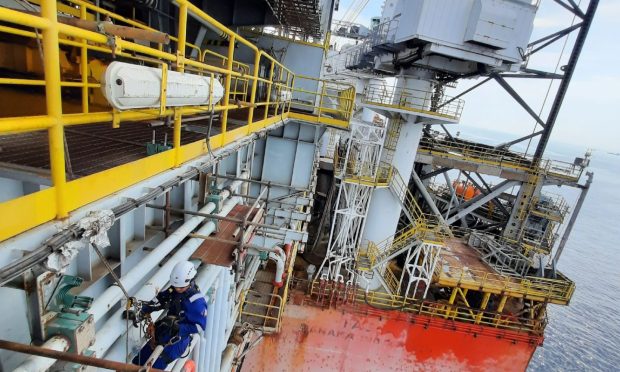The Health and Safety Executive (HSE) has published its latest annual report on the state of North Sea safety.
Looking at 2022, the watchdog found 175 “dangerous occurrences” during the year, defined as having “high potential to cause death or serious injury” but which happen relatively infrequently.
The total was broken down into hydrocarbon releases (51), wells (11), pipelines (9) and a series of “other” cases (104) in their own bracket.
Those overall figures are down on 2021’s dangerous occurrences which numbered 198 and 2020’s 172.
The number of oil and gas releases (hydrocarbon releases) at 51 were also down on 91 in 2021 and 94 in 2020.
HSE said 72 non-fatal injuries took place in 2022, the highest since 2019 (98), and no fatalities occurred.
Injuries covered non-specified issues and cases which meant workers took more than seven days off.
‘Sprains and strains’ accounted for 25% of all injuries, with ‘fracture’ accounting for a further 24%. The most common body part to be injured was ‘upper limb’ (56% of all injuries), followed by ‘lower limb’ (24%).
‘Non compliance issues’ also recorded
Meanwhile HSE uncovered a total of 1,083 “non-compliance issues” which were “most commonly relating to maintenance (158), followed by emergency arrangements (131)”.
Safety-critical systems (127), control of work (120) and plant integrity (109) round off the top five.
The total figure is the highest since 2018, when 1,254 issues were uncovered.
Last month, trade body Offshore Energies UK (OEUK) published its own report into North Sea safety which revealed, among other findings, that diabetes and blood pressure were among the top causes of failed North Sea medicals.
HSE’s report was published on its website at the end of November.
It comes amid a series of HSE issues in 2023 for the sector linked to body mass index and a continued backlog of delayed maintenance.
Read more:
Over a third of North Sea workers too heavy for lifeboats
HSE documents lay bare ‘alarming’ safety failings across North Sea platforms
